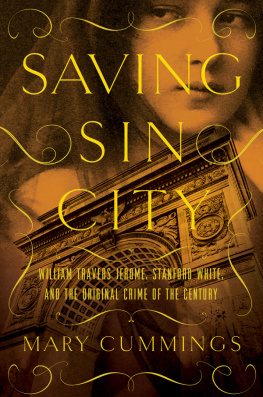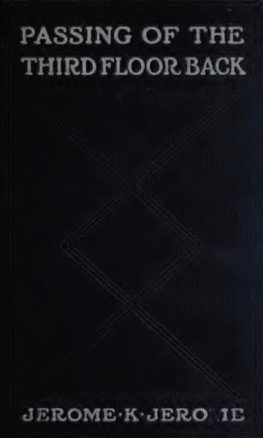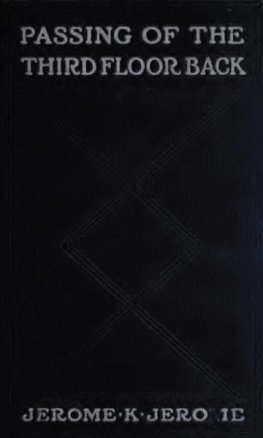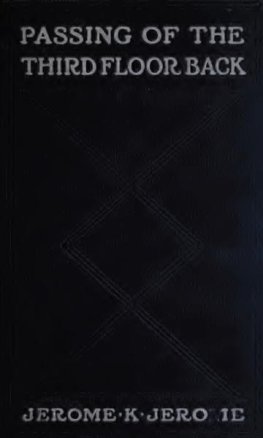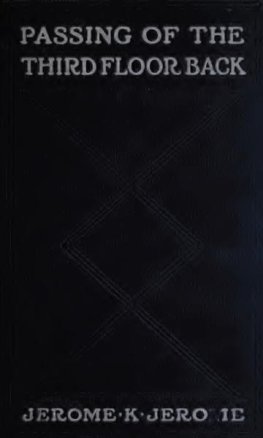
SAVING
SIN CITY
WILLIAM TRAVERS JEROME, STANFORD WHITE,
AND THE ORIGINAL CRIME OF THE CENTURY

MARY CUMMINGS

SAVING SIN CITY
Pegasus Books Ltd
148 West 37th Street, 13th Floor
New York, NY 10018
Copyright 2018 by Mary Cummings
First Pegasus Books hardcover edition May 2018
Interior design by Sabrina Plomitallo-Gonzlez, Pegasus Books
All rights reserved. No part of this book may be reproduced in whole or in part without written permission from the publisher, except by reviewers who may quote brief excerpts in connection with a review in a newspaper, magazine, or electronic publication; nor may any part of this book be reproduced, stored in a retrieval system, or transmitted in any form or by any means electronic, mechanical, photocopying, recording, or other, without written permission from the publisher.
ISBN: 978-1-68177-746-7
ISBN: 978-1-68177-806-8 (e-book)
Distributed by W. W. Norton & Company, Inc.
TABLE OF CONTENTS

What is the chief end of man? To get rich. In what way?
Dishonestly if we can, honestly if we must.
M ARK T WAIN
If the people want blackmailers and other criminals vigorously
prosecuted without fear or favor, they will elect Judge Jerome.
N EW Y ORK H ERALD , N OVEMBER 3, 1901
I n the early evening of January 4, 1901, a crowd is beginning to form around 871 Fifth Avenue, the palatial residence of one of the citys richest and most powerful men. They have come out on this frigid night to catch a glimpse of the diamond-draped women and men in swallowtail who are expected at William Whitneys society ball, though it will be hours before any of the guests arrive. A celebration of the formal debut of his niece Helen Barney, the party is also an occasion for Whitney to unveil his splendid new home, one of his friend Stanford Whites most lavish creations. For the gawkers outside, a broad span of wrought ironwork over the main door offers a meager but tantalizing view of the mansions green onyx vestibule aglow in the light of three immense bronze chandeliers.
As darkness descends and their numbers increase, Captain Titus of the 25th Precinct keeps a watchful eye on the crowd, ready to leap into action at the first sign of rowdiness. Then, at precisely 11:00 oclock, the hour named on their invitations, the guests begin to arrive. As the New York Times reports the next morning, the flash of the carriage lamps and the clang of the motor gongs alert the sidewalk spectators that their patience is about to be rewarded. There are gasps as Caroline Astor, unbent by the weight of her magnificent diamonds, glides toward the entrance like a majestic battleship lit up for the night. When the stunning Cryder triplets are sighted wearing identical frocks of white lace over white satin, excitement reaches a pitch that has Captain Titus on the alert.
Many of the four-hundred-odd guests have come straight from the opera. Passing through splendidly decorated gates acquired by White from an Italian palazzo, they mount a marble staircase to be greeted in the salon by Whitney, his sister Lily Barney, and her daughter Helen. Lily is resplendent in velvet and brocade, Helen demurely radiant in white mousseline de soie, but the one from whom each guest is craving some sign of special attention is Whitney himselftall, suave, and heartthrob handsome. Profiled in a recent Times magazine, he is described as a man of distinguished appearance standing over six feet, straight and vigorous as a West Point cadet a staunch and generous friend, and a liberal-minded and public-spirited citizen.
The transformation of what had been a rather undistinguished residence into this treasure-filled palace fit for a doge has required what the Times discreetly termed a large amount of money and time. Others are more specific, citing $2 to $3 million (roughly $65 million today; currency in 2018 is worth roughly twenty-six times what it was then) and nearly five years under construction. Whitney, who has abandoned a promising political career to make his fortune, lacks neither time nor money. While still in his forties he has turned his back on idealism and entered a period of frenetic financial gain. After helping to bring down the Tweed dictatorship in his days as a reformer, when, as New Yorks corporation counsel, he successfully contested the Tweed regimes fraudulent claims against the city, he has made peace with the corrupt Tammany machine, which still controls Manhattans Democratic Party. A pragmatic move, it has enabled him to all but corner the citys transit system with franchises awarded to him by his Tammany pals. In league with the wily Thomas Fortune Ryan, he has spearheaded the creation of the Metropolitan Street Railway Company and its holding company and has been watering stock and emptying the profits into his pocket. It is rumored that he has obtained virtual control of Tammany Hall and acquired a fortune of some $40 million.
Whitneys ruthless tactics and questionable ethics are surely no secret among those in his social orbit but among his peers his transgressions are largely ignored, if not envied. He remains a society favorite, popular with men, adored by women. It is a small world whose denizens are members of the same clubs, use the same bankers and lawyers, hold neighboring boxes at the opera, and attend the same balls in a city awash in money and fast becoming the financial, entertainment and manufacturing capital of the country.
Geographically close but morally a world away is the bohemian world of the Tenderloin, a square mile of midtown Manhattan devoted to theater, big gambling houses and honky-tonk ranging from plush brothels to noisy dance halls where vice thrives under the protection of a corrupt police force. Stagestruck chorus girls amuse themselves there with high-spirited bachelors who have flocked to the city seeking their fortunes, but the young beauties save their most seductive charms for the uptown millionaires like Whitney and White, who frequent the Tenderloin for a lively good timeand perhaps something more. Adventurous pleasure seekers, they are at ease in the bohemian haunts of the Tenderloin, where the pleasures are illicit but seldom dangerous. For them, Tenderloin vice has a tawdry glamor that offers pleasures more like entertainmentalbeit of the forbidden varietythan sin. Its delights are perceived as distinct from those of the degrading and dangerous vice dens of the slumsthe dark underside of the city that festers, neglected and largely unacknowledged by the swanning socialites at Whitneys ball.
At the Fifth Avenue mansion, the champagne is flowing and the revels well under way when the appearance of a tall figure with bristling red hair and a great moustache causes a frisson of excitement to ripple through the room. As the news that Stanford White has arrived travels at lightning speed, heads turn to focus on New Yorks most celebrated architect, tastemaker, and man-about town.
White is a close friend of his host, who also happens to be his most lucrative client. It is White who has pillaged Europe to furnish Whitneys palace with carvings, paneling, staircases, tapestries and entire gilded and coffered ceilings stripped from the Continents ancient castles and shipped off to Fifth Avenue. And it is White whose luminous buildings many credit with rescuing the city from its drab brownstone pasta dull uniformity that Edith Wharton once decried for its lack of towers, porticoes, fountains or perspectives: for its sheer ugliness.
Next page
